For years, locals in Milas, Türkiye had been using an old stone structure as a stable — without realizing it was once a bathhouse dating back to the days of ancient Rome.
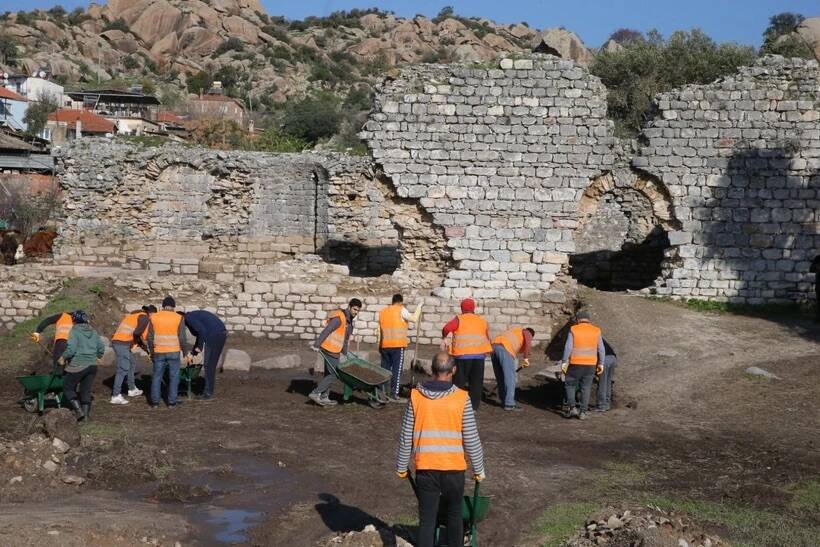
Anadolu AgencyArchaeologists excavating the site of an ancient Roman bathhouse in Türkiye.
Archaeologists from Selçuk University recently discovered several mosaics depicting aquatic animals during excavations at the remains of Herakleia, an ancient city found at the western foothills of Türkiye’s Mount Latmus.
Excavations at the site were conducted as part of the Türkish Ministry of Culture and Tourism’s “Heritage to the Future” project.
Led by Zeliha Gider Büyüközer of Selçuk University’s Archaeology Department, the project’s goal was to document a Roman bathhouse at the site that had been used as a stable by locals for years before its discovery. In the “cold room” of the bath, Büyüközer’s team found the mosaics depicting crocodiles, dolphins, flamingos, and eels.
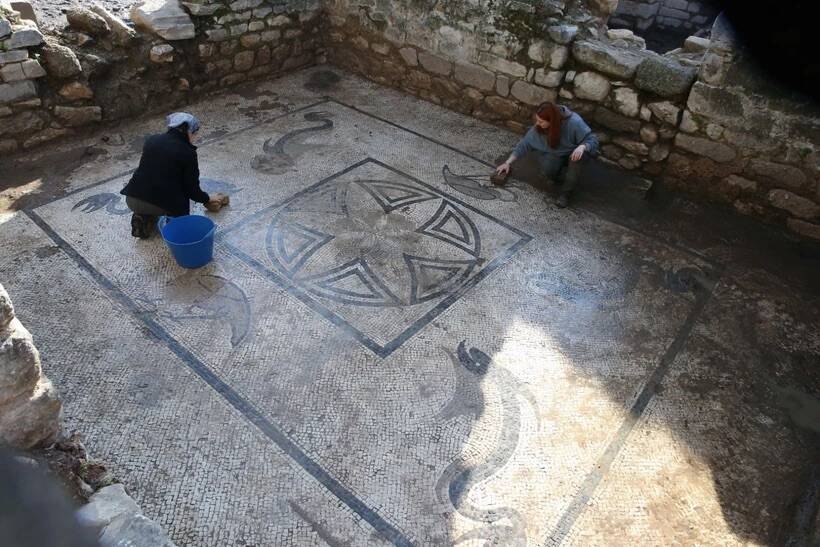
Anadolu AgencyThe bathhouse had several rooms meant to keep water at different temperatures.
Furthermore, the animals pictured in the mosaics are a mix of local and exotic, raising interesting questions about the craftsperson who created them.
Animal Mosaics Found At The Ruins Of A Roman Bathhouse In Türkiye
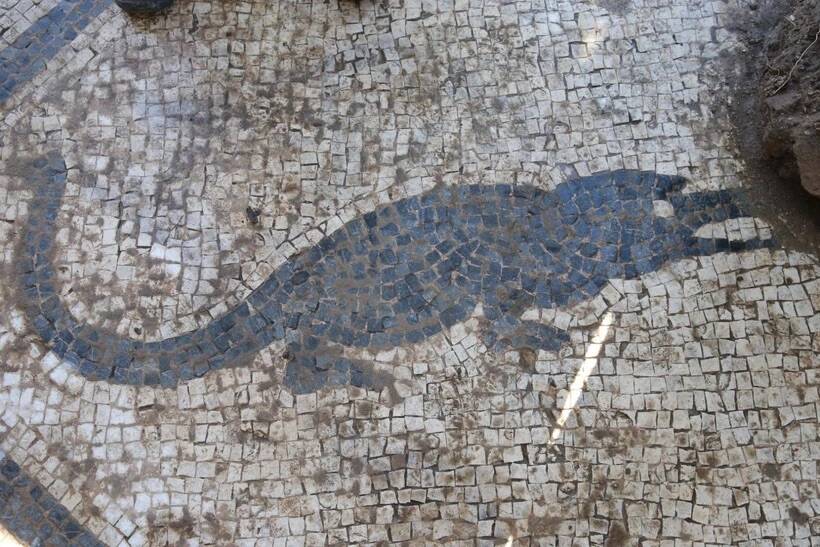
Anadolu AgencyA depiction of a crocodile, a creature not native to the region, featured as part of the mosaic floor.
Among the animal mosaics, the most curious were the six crocodiles, as the region’s temperate climate does not naturally support crocodile habitats. This detail led to some debate over whether the region had been home to crocodiles in the days of ancient Rome, or if the artist had instead come across these animals in their travels elsewhere.
“This mosaic has attracted a lot of attention. Those who see it may think that crocodiles may have lived in this geography,” Büyüközer told Anadolu Agency. “This geography is not very suitable for crocodiles to live, but the master who made this mosaic must have seen the crocodile and was able to depict it in all its details and transfer it to the mosaic. Therefore, we think that the master who worked in this place may have been a traveling master and may have worked in geographies where such crocodiles lived in previous years.”
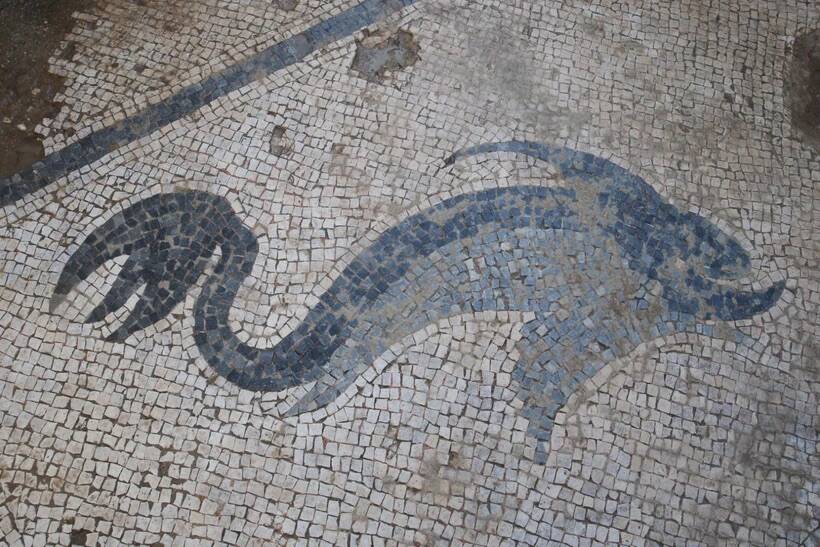
Anadolu AgencyDolphin mosaics were featured in the corners of the warm room’s floor.
Crocodiles were not the only animal to be featured in the mosaics, however. In addition, researchers found mosaics of four dolphins in the corners of the bath’s warm room, with flamingos and eels taking up the space in between. The eels are notably represented with red stones and are of special significance in the region. Likewise, flamingos still populate the region today.
“Eel is a very important animal for this geography. Flamingos are also one of the bird species that still live in this area today. In fact, the artist has painted the animals he saw in the geography here,” Büyüközer said.
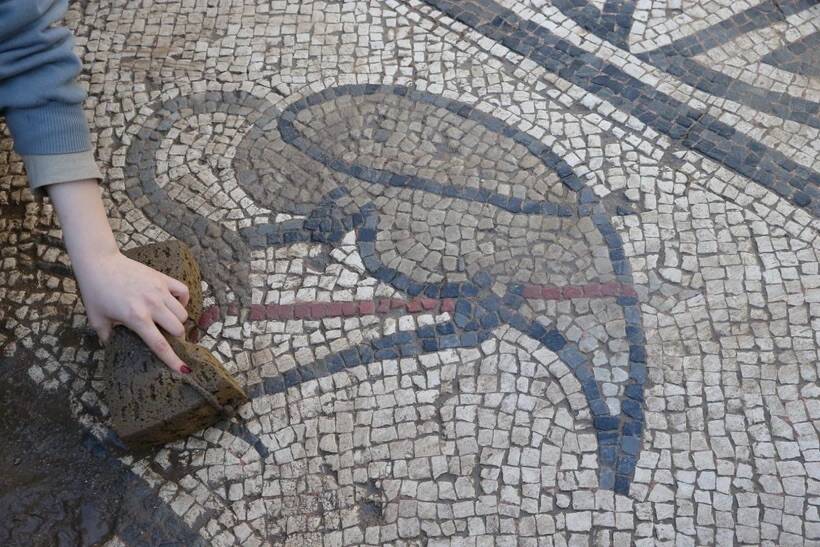
Anadolu AgencyFlamingos and eels are native to the region.
This Ancient Roman Bathhouse Had Been Repurposed As A Stable By Locals
Over the years, long after the fall of Rome, the bathhouse’s original purpose fell out of fashion, and locals repurposed the structure to help raise their animals. This included using the bathhouse as a stable to keep animals out of harsh weather conditions.
“We never thought of this place as an archaeological site,” one resident said. “We never imagined it held such treasures.”
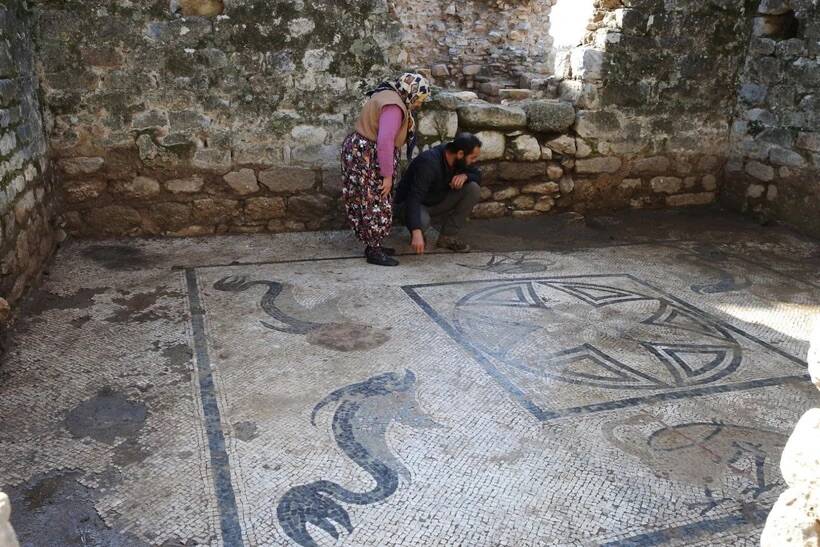
Anadolu AgencyArchaeologists say the floor was so well preserved because it was made of meticulously laid stone.
To this day, the area next to the bath is being used as a barn.
Another local, 68-year-old Turcen Aydin, described his shock at the discovery of the mosaics: “I tied my animals here for years to protect them from the rain and cold. I was very surprised when I saw the mosaics and figures that were unearthed after the excavation started here. The excavation team did a great job here. Thanks to them, we saw the historical artifacts here. I was very happy. I never even thought of seeing something like this. It turns out that we lived on a piece of history and we didn’t know it.”
The goal of the project was to examine the site’s history and promote tourism in the region. Büyüközer said that excavation work at the Roman bathhouse would continue throughout 2025 and will reveal even more of the region’s rich past.
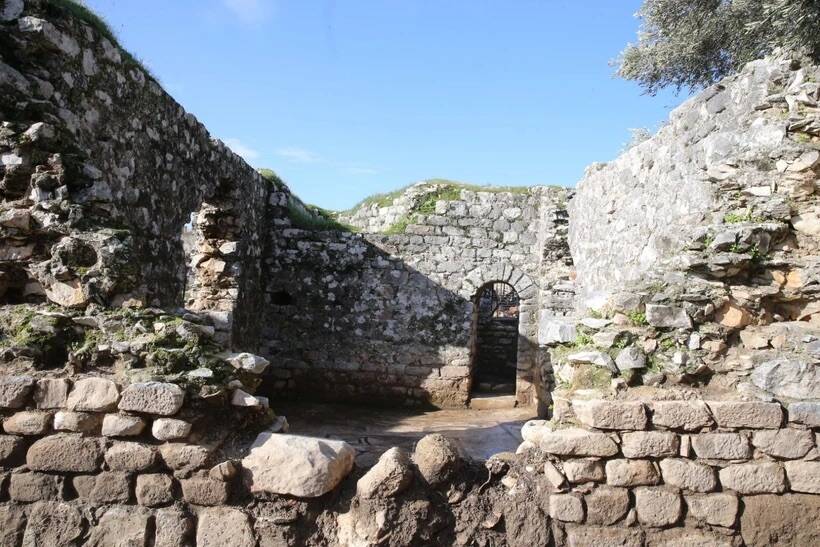
Anadolu AgencyFor many years, locals used the ancient Roman bath as as a stable for their animals.
Similar discoveries have been made across Türkiye in recent years. At the end of 2024, for instance, the Hurriyet Daily News reported on the discovery of stained glasses and mosaics at the Harran archaeological site in Türkiye’s Şanlıurfa province, now believed to be the site of an early Byzantine church, one of the earliest in the region.
A year prior, in December 2023, researchers also discovered another set of Roman mosaics at Kela Hanma in Türkiye’s southeastern Mardin province. Like the newly discovered mosaics, these featured aquatic animals such as octopuses, fish, mussels, and seals as well as aquatic plants. Though the mosaics here suffered more damage over the years, the similarities highlight how ancient craftspeople once used animal motifs in their mosaics in ways that remain striking to this day.
After reading about these Roman mosaics uncovered in Türkiye, learn about the discovery of Türkiye’s ancient “City of the Dead,” the necropolis of Tios. Then, read about the discovery of another set of aquatic mosaics in England.





